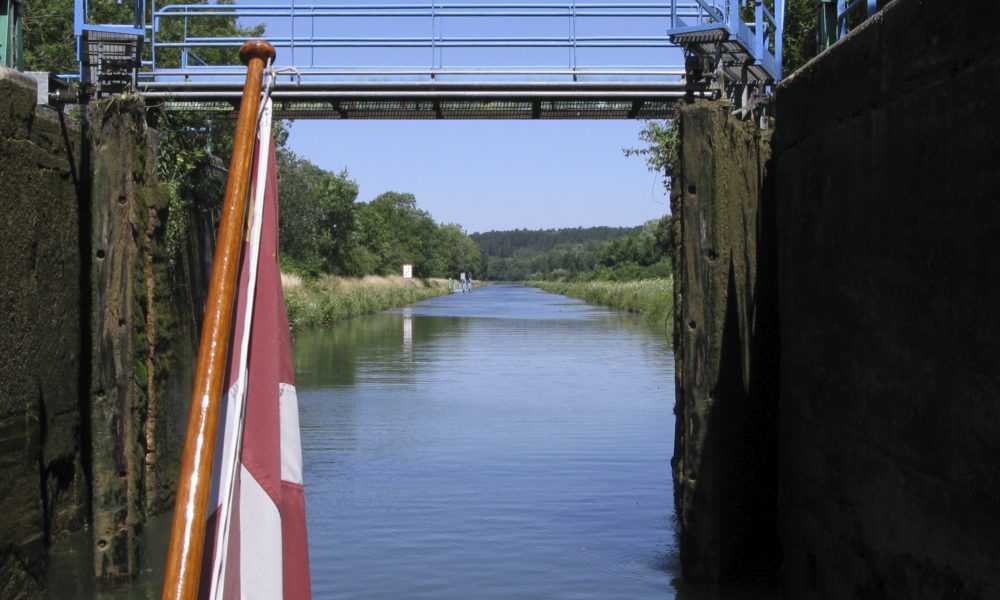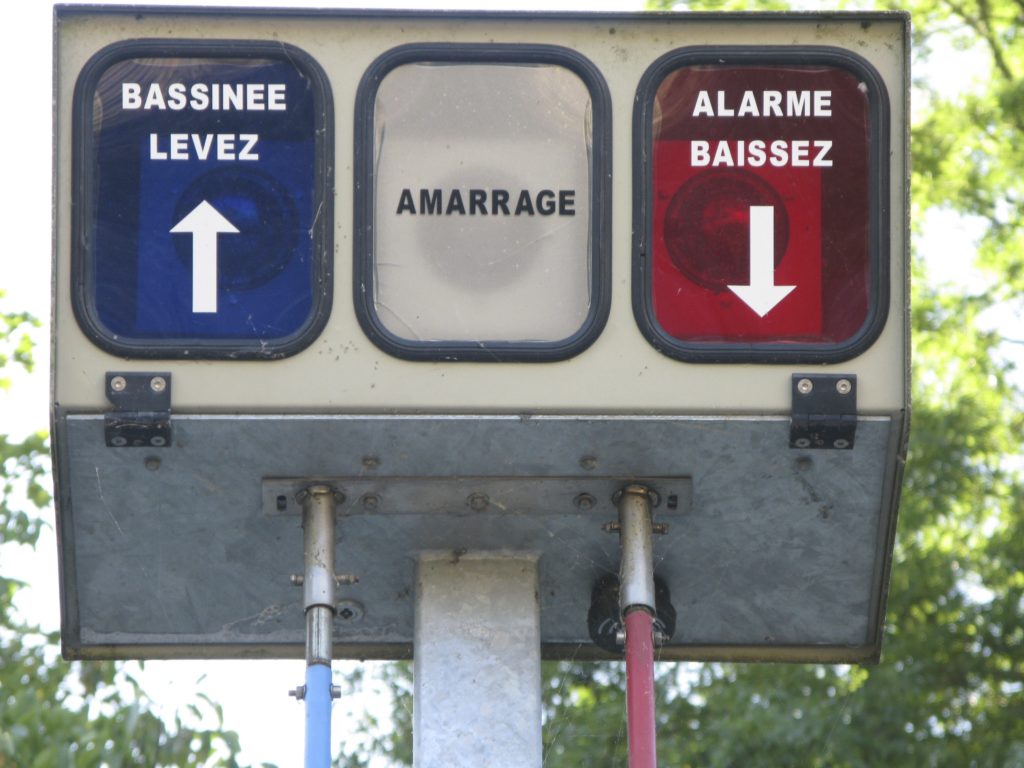Marne is a lovely river to sail on. Nature is wild and untamed

48° 57′ 22.3272” N 2° 53′ 18.4776” E
July 7. – 2014
Departure from Meaux 8.00. First we sail 300 metres to Meaux’s city centre to buy baguettes and croissants. We call at the local port, which turns out to be much more charming, welcoming and well maintained than the private. So much for private initiative.
We sail further, taking morning coffee along the way.
The Marne is a lovely river to sail on. Nature is wild and untamed. Tall trees and dense shrubbery surround the river. Now teeming with herons. Only occasionally nature is broken up by small villages, that are often located a bit back from the river, as if the water is something you should fear. It is as if the French have turned their “backs to” their waterways. Where the Dutch welcome water with open arms, build houses near the water, establish their gardens and build piers for their boats, so they appear as a tribute to the close affinity between water and land, so the French keep a respectful distance.
We keep a cruising speed of six knots, and as we acquaint ourselves with automatic locks, which we have to operate with a remote control, we think we are some sort of a lock champions.
The lock master explains in raving French, how we operate the locks. Henrik and I understand only a fraction of his tirade. Something about pressing a blue button. But only once. And only when we are just off the waiting bridges ahead of the locks. The rest we understood not a bit of.

Nice! We rule the locks ourselves. At the next lock we will be tested. We push the button. Nothing happens. We sail back to the waiting-bridge. We press the blue button again. This time we point the remote control directly at the gate, and then it works. A bright white light switches on at the side of the red, indicating that there is contact, and we can see, that the lock begins to drain the water out, and later opens the floodgates itself.
When we get into the lock, we do not know quite what to do. We moor the boat. Waiting a little to see if the floodgate closes and the water begins to cascade in. Nothing happens. We press again the blue button. Only once. Then once again, a little longer. Nothing happens. Per climbs up the ladder, and phones the gate guard.
“Parles vous Anglais”? No. Not at all.
Per explains in broken French what our problem is. The man responds in fast-fluent French, without Per understanding much of the reply. Then, the communication is interrupted. We press a little more on the remote, but decide to call the VNF – the french water-authorities – again, our best lifeline. This time, we understand one word, “arrive” – someone will come. And sure enough. Shortly after a man from VNF jumps into the old lock house and put the lock into action. A friendly waving but no explanation.
Not until the next lock we understand, that it is not the remote, that controls the gates to close after us, and makes the water pour in, but a blue tube inside the gate, that we must lift up, so that the machinery starts mechanically. Who could know that? We have an electronic remote in our hand, and yet it is a physical, mechanical force, that starts the lock. They are crazy, the French.
From here we go on without problems through the locks.
We sail Ronja to a rural pontoon bridge next to a village called Charly. Vineyards surround us along with Frenchmen with their fishing rods. No Wi-Fi. No water. No electricity. No toilets. Only a bridge and a large country of silence.
Susanne works perfectly as a sandwich maid. She is originally trained as such, and as she did not consider herself suitable for deck-work, she regularly brews coffee and prepares sandwiches in what she calls the kitchen. We live as admirals.
Log-book: Today’s distance: 70 km. Sailed time: 8:00 to 16:30 = 8 ½ hour. Locks- 6 pcs. Weather: Slightly cloudy, mostly cloudy. Only at the end of the day rain.